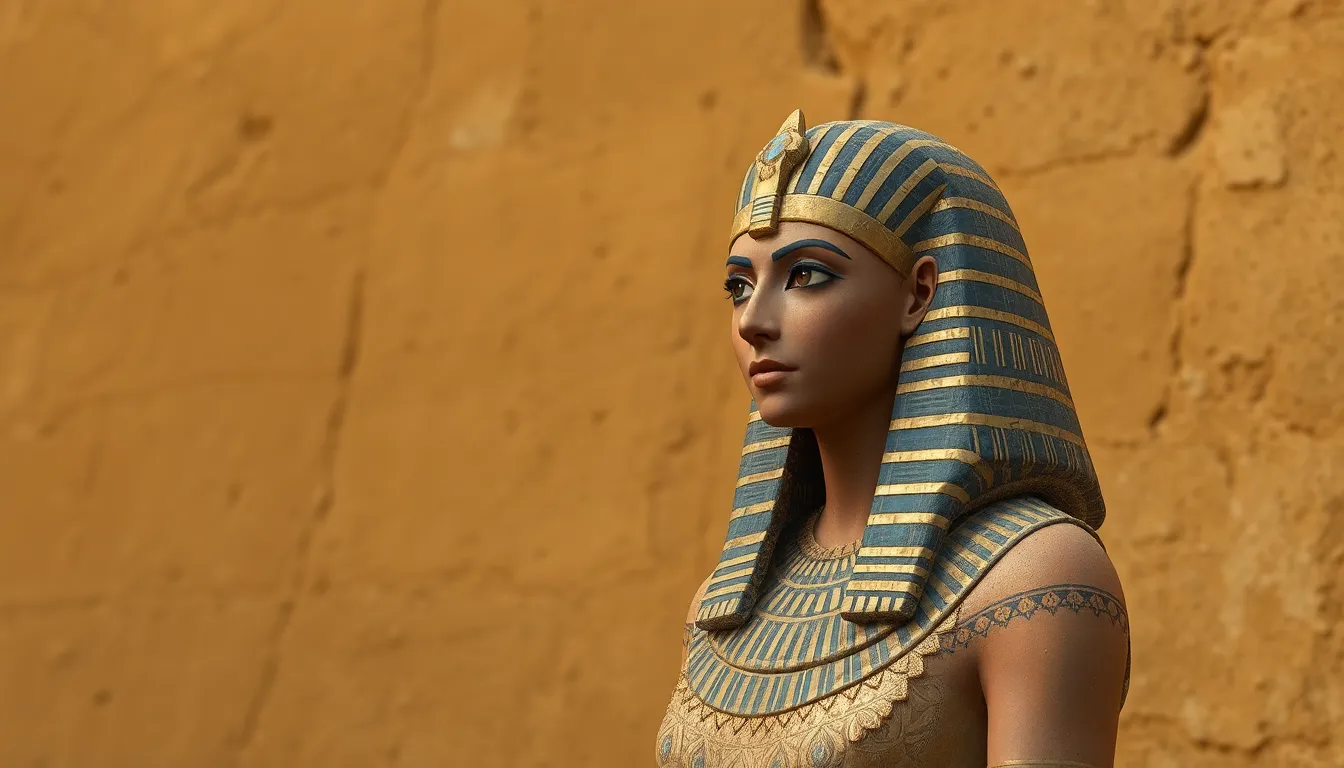Hatshepsut: Myths of the Female Pharaoh
I. Introduction
Hatshepsut, one of the most remarkable figures in ancient Egyptian history, stands out not only as a ruler but as a symbol of female empowerment in a predominantly patriarchal society. Her reign, which lasted for about two decades during the 18th Dynasty, was marked by unprecedented achievements in trade, architecture, and the arts. Despite her significant contributions, Hatshepsut’s legacy has often been overshadowed by myths and misconceptions regarding her identity and reign. This article aims to explore the myths and realities surrounding Hatshepsut’s rule, providing a clearer understanding of her impact on ancient Egypt.
II. Historical Context
To understand Hatshepsut’s significance, it is crucial to examine the gender roles and societal structures of ancient Egypt. The civilization was characterized by a strict hierarchy, with men occupying most positions of power. Women, while generally respected, were often relegated to domestic roles. However, there were exceptions, and Hatshepsut’s rise to power is a testament to the complexities of gender in ancient Egypt.
Hatshepsut was born into the royal family, the daughter of Pharaoh Thutmose I and Queen Ahmose. Her lineage provided her with a unique position, as she was both the wife and half-sister of Thutmose II, further intertwining her claims to the throne.
III. The Ascension to Power
Hatshepsut’s ascension to the throne was not without its challenges. After the death of her husband/brother Thutmose II, Hatshepsut was faced with the difficult task of ruling alongside her stepson, Thutmose III, who was still a child at the time. In a politically savvy move, she assumed the role of regent, gradually consolidating power and eventually declaring herself Pharaoh.
Her rise can be attributed to several factors:
- The support of powerful officials and priests
- Her strategic marriage to Thutmose II
- The legitimacy conferred by her royal lineage
IV. The Image of a Pharaoh
Hatshepsut’s portrayal in art and architecture reflects her unique position as a female ruler. She commissioned numerous monuments and temples, the most famous being the Temple of Deir el-Bahari, which stands as a testament to her architectural prowess and divine right to rule. In her depictions, Hatshepsut often adopted male regalia, including the false beard and traditional kilt, which reinforced her authority as Pharaoh.
This choice of imagery was significant as it challenged contemporary perceptions of femininity and power, allowing Hatshepsut to assert her dominance in a male-dominated society. Her inscriptions often refer to her as His Majesty, further solidifying her position as an equal to male pharaohs.
V. Myths and Misconceptions
Despite her accomplishments, Hatshepsut’s reign has been the subject of numerous myths and misunderstandings. Some common misconceptions include:
- That Hatshepsut was merely a regent and never an actual Pharaoh.
- That her gender was a hindrance to her rule.
- That her reign was marked by conflict and instability.
Over time, historians have examined these myths, revealing a more nuanced understanding of Hatshepsut’s reign. While she faced opposition, especially from Thutmose III later in life, her rule was largely peaceful and prosperous.
VI. Achievements and Contributions
Hatshepsut’s reign was characterized by significant achievements, particularly in the realms of trade and architecture. Some of her major accomplishments include:
- Expanding trade networks, particularly with Punt, leading to an influx of luxury goods
- Initiating impressive building projects, including her mortuary temple at Deir el-Bahari
- Promoting the arts and commissioning numerous statues and reliefs that celebrated her reign
Her Temple of Deir el-Bahari is especially noteworthy, as it showcases her architectural vision and religious devotion. The temple complex is adorned with stunning reliefs that depict her divine birth and other significant events in her reign, reinforcing her legitimacy as a ruler.
VII. Legacy and Historical Impact
Hatshepsut’s legacy has had a lasting impact on the perception of female rulers in ancient Egypt and beyond. Her reign demonstrated that women could wield power effectively, paving the way for future female leaders. Notably, her story has inspired many modern scholars and feminists who seek to highlight the role of women in history.
In recent years, archaeological discoveries and advances in Egyptology have led to a rediscovery of Hatshepsut’s legacy. Her achievements are now celebrated, and her story is viewed in a more positive light, challenging earlier narratives that diminished her role in history.
VIII. Conclusion
In conclusion, the myths surrounding Hatshepsut often obscure the realities of her reign as one of ancient Egypt’s most successful pharaohs. Hatshepsut’s story is one of resilience, ambition, and remarkable achievement, serving as an important reminder of the complexities of gender and power in history. Understanding her true legacy is crucial for appreciating the contributions of women in leadership roles throughout history.




